Teaching a teacher; The anatomy of a unique graduate student
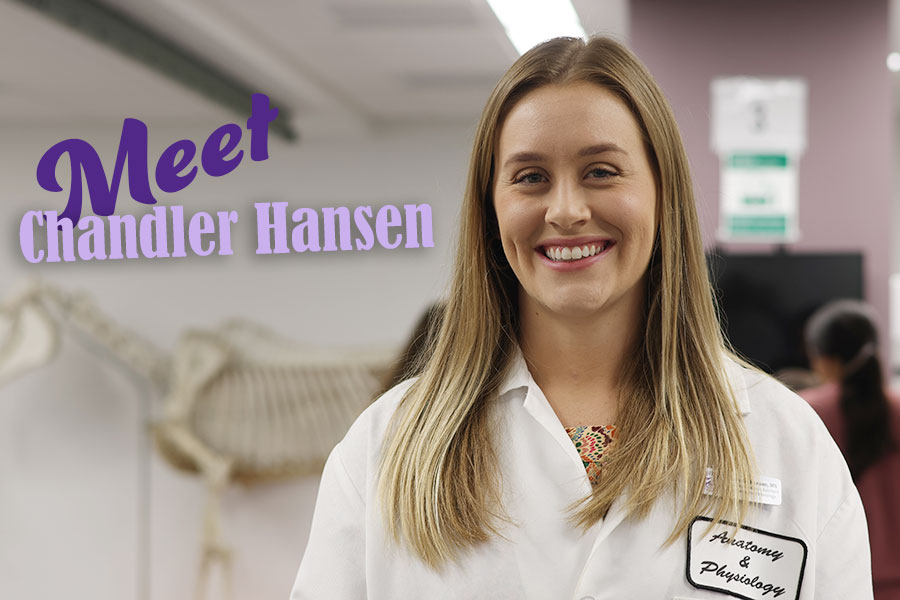
While most graduate students in the veterinary college will conduct laboratory and clinical research projects, one student is going to the front of the class – to teach.
Meet Chandler Hansen, a doctoral candidate in the Department of Anatomy and Physiology, who has an atypical curriculum for her Ph.D. program.
“My title is technically a graduate research assistant, but I have multiple teaching responsibilities, which makes me different from any other Ph.D. student in the department,” Chandler said.
Dr. Pradeep Malreddy, clinical associate professor and co-major professor alongside Dr. Matthew Basel, said Chandler’s position is unique, not only at K-State, but among other veterinary colleges.
“We don't believe there are any other schools that offer this particular curriculum – a Ph.D. in anatomy track with an emphasis on anatomy education,” Dr. Malreddy said. “There is a program at another school where they are studying anatomy as part of a virtual reality or augmented reality curriculum, but those are related to medicine and are not necessarily for the instruction of anatomy classes.”
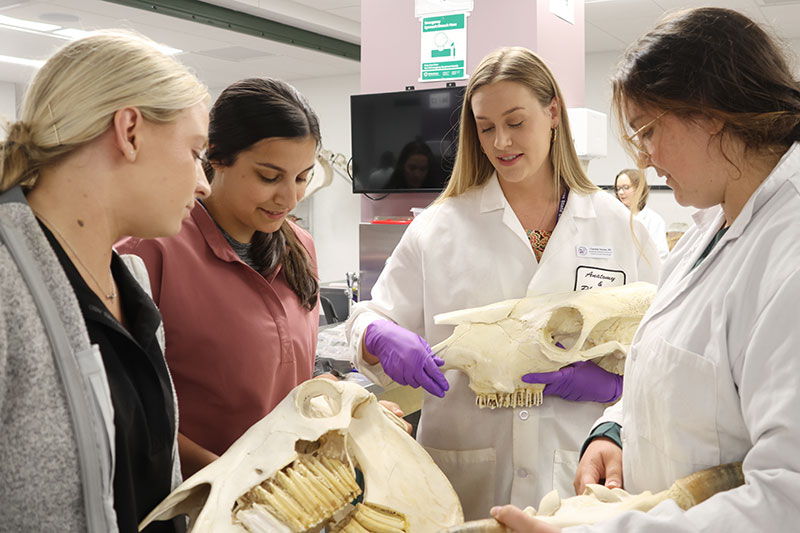
Chandler reviews anatomical features on livestock skulls with first-year veterinary students Mackenzie Birney, Whitney Leiblie and Kayleigh Corless.
Chandler, who is from Wichita, came to K-State to earn her bachelor’s degree in animal sciences. After graduating, she was accepted into the inaugural class of the One Year Master’s in Biomedical Science in the veterinary college, which she completed in 2021. From there, she became interested in doctoral studies.
“Chandler wanted to pursue anatomy education, so we developed curriculum around those needs,” Dr. Malreddy said. “As a master’s student, she took the core courses to prepare her for a professional program. These included physiology, anatomy, histology, pharmacology, biomedical methods, and more. During her Ph.D., she has taken core anatomy courses required for the Doctor of Veterinary Medicine degree program, giving her a solid foundation, especially in anatomical concepts.”
And once she learned those concepts, the next step involved teaching those concepts to other students.
“I help teach the human anatomy course during the summer and comparative anatomy course in the fall for the one-year master's students,” Chandler said. “And then I teach gross anatomy one and two to the veterinary students. For my teaching assistantship, I'm responsible for giving a few lectures per course, dissecting prosection specimens, as well as being present in the lab as a teaching assistant.”
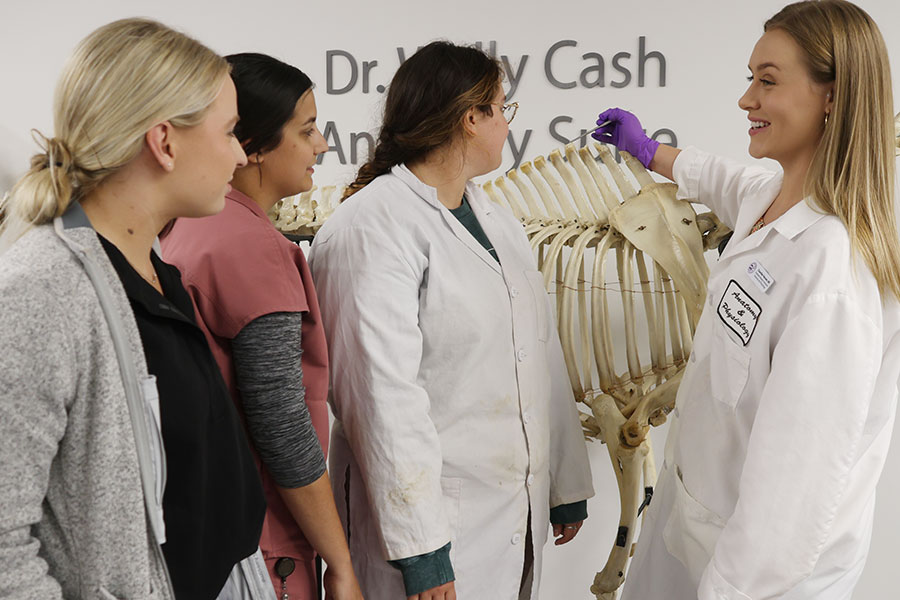
Chandler utilizes a full equine skeleton to point out features to Mackenzie, Whitney and Kayleigh.
Chandler has duties outside of the classroom like writing exam and quiz questions, grading assignments, facilitating review sessions, and responding to student emails with their questions. As she has been keen in helping teach dissections in the anatomy laboratory, Chandler has developed some special teaching tools as part of her research responsibilities.
“For the gross anatomy one course, which is canine focused, we created pre-lab videos,” Chandler said. “Before every lab, three days a week, the students are instructed to watch the video, which gives them a synopsis of what to expect for the lab that day.”
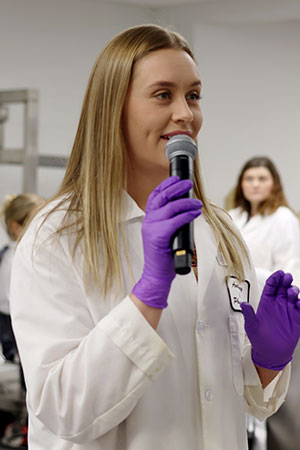
In addition to her teaching responsibilities, Chandler still has a research component required for Ph.D. studies. Another one of her projects entailed the creation of a “pre-course” for the gross anatomy two course.
She has already published one paper in the Journal of Veterinary Medical Education, “Pre-Lab Videos as a Supplemental Teaching Tool in First-Year Veterinary Gross Anatomy” with assistance from Drs. Malreddy, Matthew Basel and Andrew Curtis. Her manuscript about the implementation of her large animal pre-course is under review. Chandler has also published two articles in Faculty Focus, a website dedicated to teachers and instructors.
Dr. Malreddy said that part of Chandler’s curriculum takes place on main campus, where she has taken classes on research techniques and how to teach.
“These are education-based classes on statistics, survey research, educational research through data science and also principles of college teaching,” Dr. Malreddy said.
Chandler said she feels like she has an advantage in being able to communicate with students who are around her age and already have a similar educational background.
“I know I'm not the smartest person in the room, but because I’ve taken these classes already, I think I can take the material to a level where they are able to understand it more easily,” Chandler said. “I've been in their shoes. I've taken a lot of the same classes, either in undergrad or in the DVM program, so I think I'm able to relate to them.”
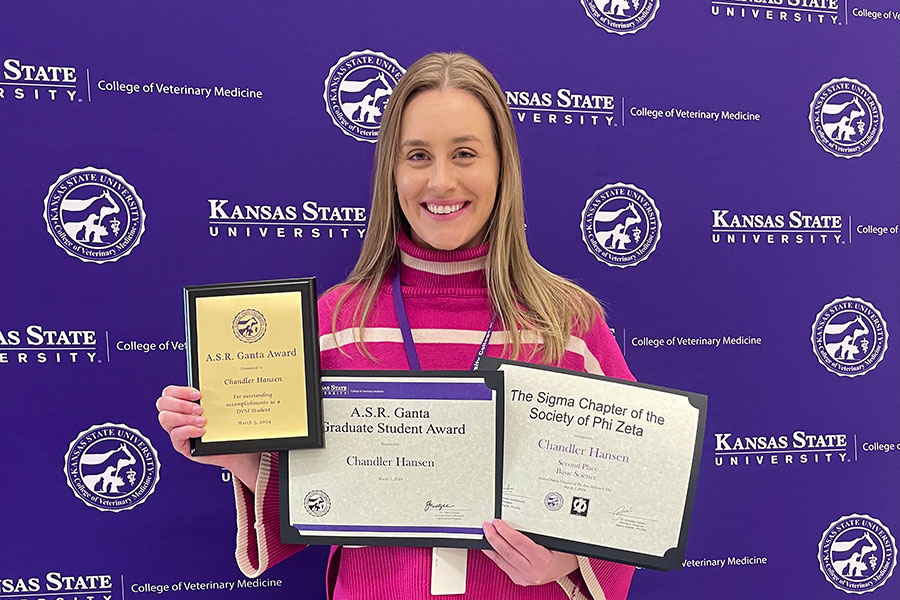
Chandler participated in the annual Phi Zeta Research Day in March and was chosen for the ASR Ganta Graduate Student Award, which recognizes a graduate student who has demonstrated competence in research by publishing a first author research paper (or manuscript accepted for publication).
“I’m excited that Chandler and that anatomy Ph.D. position has helped us pursue more educational research opportunities in our department,” Dr. Basel said. “I’m excited to see how her research affects our teaching and our curriculum.”
After completing her Ph.D. this summer, Chandler said she anticipates staying at the K-State College of Veterinary Medicine and continuing to teach master’s and veterinary students.
“I would prefer to live in a smaller town like Manhattan,” Chandler said. “I always see familiar faces everywhere I go, so it just makes it feel more homey.”